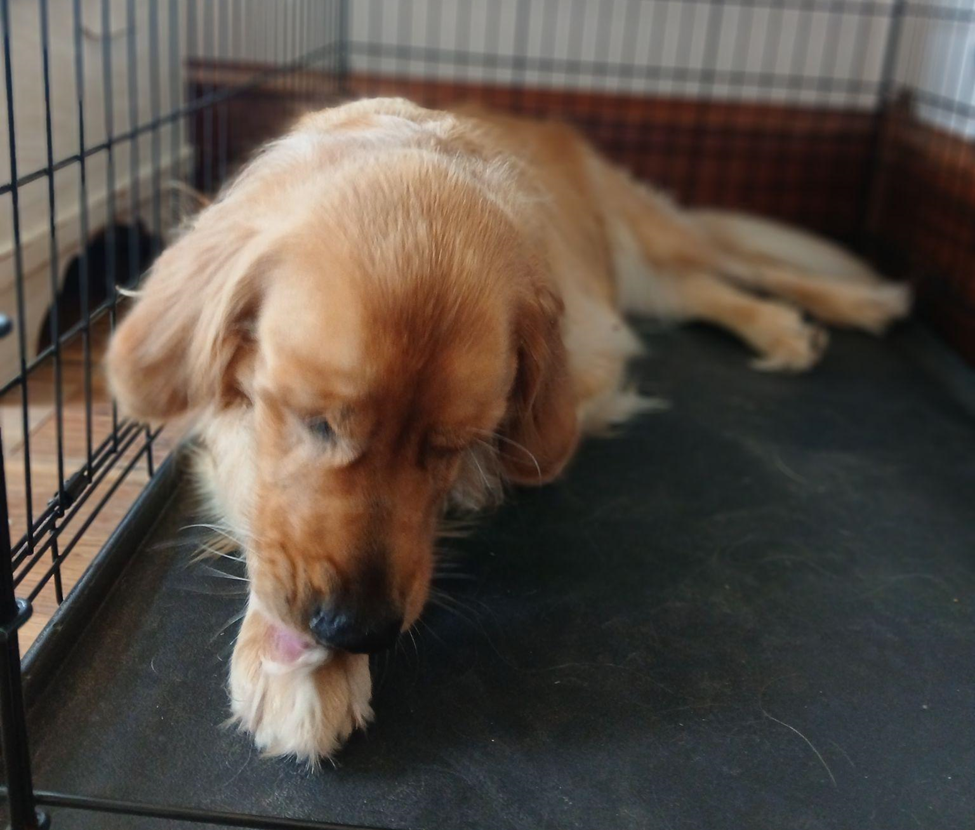Although the temperatures have remained high, we’re all ready for the fall season. Some of us love the crisp, cool weather, others look forward to Halloween, and then there’s the pumpkin spice lovers. However for some pets, fall doesn’t bring enjoyment, it brings misery. In Illinois, late summer, and early fall bring both a surge in the flea population as well as an increase in ragweed pollen and mold spores.
Pets younger than 1 year old, do not usually suffer from environmental allergies. Pets must be exposed to an environmental allergen first, then their body will form a response to the allergen. An allergic response is an over reactive immune response. The body reacts to the allergen with such intensity that it causes a pet’s extreme itch. Imagine your worst case of poison ivy or a bug bite that won’t go away. Then imagine that feeling over a large portion of your body, and not having hands to itch. Cats will bite or scratch out their hair. Dogs will itch, chew their tail, chew their paws, or rub their ears and whine. Select dogs may also experience vomiting or diarrhea. Some cats may also experience sneezing, coughing, wheezing or eye discharge.
The easiest step to prevent an itchy pet is to eliminate fleas from their environment. Flea bites will make any cat or dog itch. A select group of pets will experience an extreme allergic reaction to flea saliva and develop Flea Allergic Dermatitis(FAD). Pets with FAD will rip out their hair in an attempt to get rid of their itch. At Wags and Whiskers Veterinary Service we recommend prescription, year round flea and tick prevention. Flea and tick prevention will not prevent flea bites, it will just kill the fleas that bite your pet. It is important you also eliminate fleas and ticks from your home. All pets in the home need to be treated with prescription prevention. If there is an untreated animal, even if that animal does not go outdoors, it will still provide an environment for all the fleas to live on that are tracked in by other pets and people. Make sure all bedding is routinely washed and carpets are well vacuumed.
It is hard to prevent environmental allergies. You cannot control the weeds growing in a neighbors yard, or cut down all the trees in the neighborhood. If your pet struggles with intense allergies, every fall, make a plan with your veterinarian to manage their allergies. For dogs, there are allergy treatments both oral and injections that block the itch response. Owners also have another option, a treatment specially formulated for their pet’s specific allergen response. This option is for managing environmental or food allergies. It is an allergy treatment for dogs and cats. A veterinarian will collect a blood sample from the patient. The patient’s allergic responses will be identified at the laboratory and a pet specific treatment will be formulated. These treatments can be given as oral drops or injections. The treatment will expose your pet’s immune system to the allergen gradually, and over time attempt to desensitize the body to the allergen. Then when your pet is exposed to the same allergen in the natural environment, it will be less likely to have an intense response, if any.
Always consult your veterinarian when your pet is itchy. Dr. Janelle, at Wags and Whiskers, can help you determine the source of your pet’s itch. There are so many variables in pet itch, and assuming the source, and treating the pet for the incorrect problem, may make their itch worse than it was previously. Pets with intense itch, or long-term itch can also develop a secondary bacterial infection which will need antibiotics. It’s also possible the itch is caused by a fungal infection that will need prescription treatment. Dr. Janelle is passionate about helping pets gain relief from allergies, call Wags and Whiskers Veterinary Service today for an appointment!
